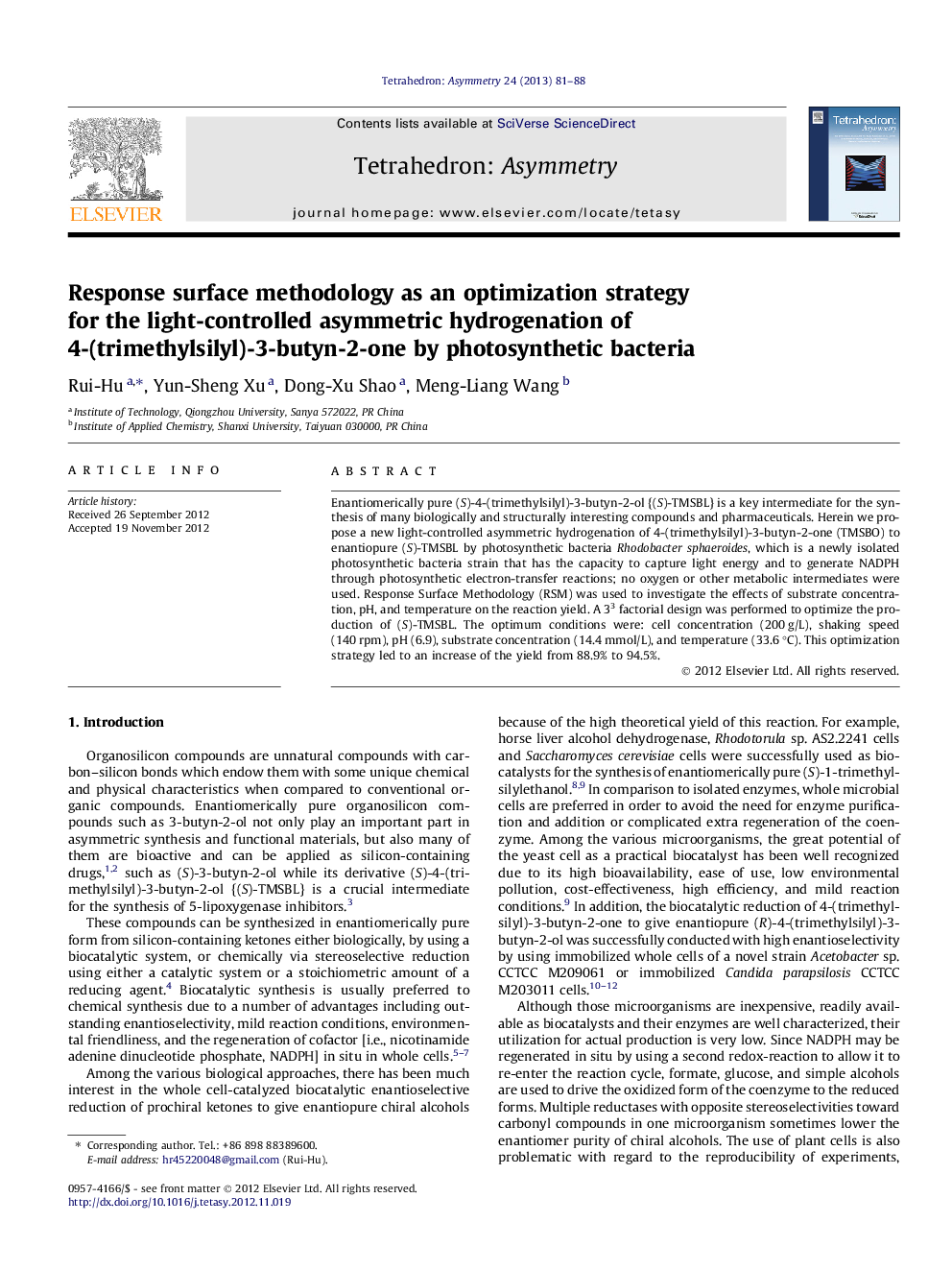| کد مقاله | کد نشریه | سال انتشار | مقاله انگلیسی | نسخه تمام متن |
|---|---|---|---|---|
| 1347802 | 1500354 | 2013 | 8 صفحه PDF | دانلود رایگان |
عنوان انگلیسی مقاله ISI
Response surface methodology as an optimization strategy for the light-controlled asymmetric hydrogenation of 4-(trimethylsilyl)-3-butyn-2-one by photosynthetic bacteria
دانلود مقاله + سفارش ترجمه
دانلود مقاله ISI انگلیسی
رایگان برای ایرانیان
موضوعات مرتبط
مهندسی و علوم پایه
شیمی
شیمی معدنی
پیش نمایش صفحه اول مقاله

چکیده انگلیسی
Enantiomerically pure (S)-4-(trimethylsilyl)-3-butyn-2-ol {(S)-TMSBL} is a key intermediate for the synthesis of many biologically and structurally interesting compounds and pharmaceuticals. Herein we propose a new light-controlled asymmetric hydrogenation of 4-(trimethylsilyl)-3-butyn-2-one (TMSBO) to enantiopure (S)-TMSBL by photosynthetic bacteria Rhodobacter sphaeroides, which is a newly isolated photosynthetic bacteria strain that has the capacity to capture light energy and to generate NADPH through photosynthetic electron-transfer reactions; no oxygen or other metabolic intermediates were used. Response Surface Methodology (RSM) was used to investigate the effects of substrate concentration, pH, and temperature on the reaction yield. A 33 factorial design was performed to optimize the production of (S)-TMSBL. The optimum conditions were: cell concentration (200 g/L), shaking speed (140 rpm), pH (6.9), substrate concentration (14.4 mmol/L), and temperature (33.6 °C). This optimization strategy led to an increase of the yield from 88.9% to 94.5%.
ناشر
Database: Elsevier - ScienceDirect (ساینس دایرکت)
Journal: Tetrahedron: Asymmetry - Volume 24, Issues 2â3, 15 February 2013, Pages 81-88
Journal: Tetrahedron: Asymmetry - Volume 24, Issues 2â3, 15 February 2013, Pages 81-88
نویسندگان
Rui-Hu Rui-Hu, Yun-Sheng Xu, Dong-Xu Shao, Meng-Liang Wang,